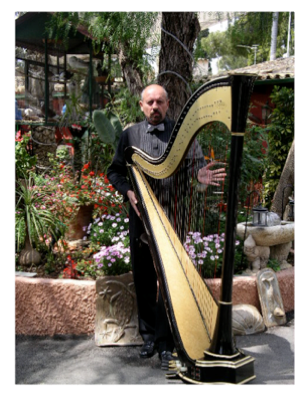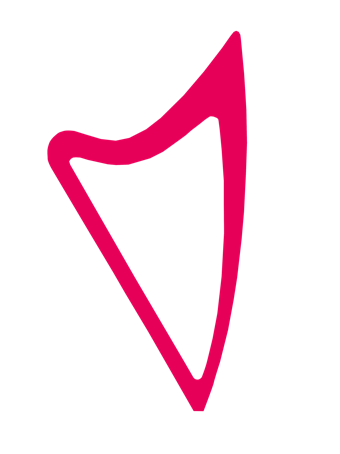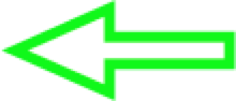
Tell you that...
I began my harp studies in Buenos Aires in 1962.
Why? In my family there are no professional musicians, much less harpists. My mother was the fan who chose for me. She likes the coastal music of Argentina, polka and chamamé as well as the most beautiful music of Paraguay... and - therefore - the harp.
There was a Guarani Harp Academy near my house under the orders of the Paraguayan master Armando Ortega, which I attended for years.
In 1970 I came to Spain for the first time and stayed there for the first 3 years. I had countless performances that led me to decide to come definitively in 1976. Since then I have been here on the peninsula. I am Argentine by birth and Spanish since 1978.
During the Guarani harp stage I tried some semitone systems, I even invented my own which had its advantages and disadvantages but none of that was enough. Although “levers” were already used in Celtic harps, the system was not yet applied to South American folk harps. That came later.
From that primitive system there was a small video recorded in the house of my friend Joaquín Eichler in Brunete (Madrid) - 1985. ("El firulete" by Mariano Mores - fragment)
I played the Folk harp until 1985 and then I changed to the pedal harp with the help of Professor Zoraida Ávila. A whole new harmony world that until then was a dream opened up for me.
What did seem important to me was to maintain the South American performance technique on the concert harp and with it the basis of my project at that time: “pedal harp with the South American technique.” The change was hard, long... but I managed it and it lasted nearly 40 years.
Nails yes, of course.
Therefore, it was possible to expand the South American harpistic-folkloric repertoire thanks to the pedals -obviously- and, also, it was possible to expand the usual repertoire of the pedal harp, thanks to the South American technique.
In 1974, while in Buenos Aires, they invited me to a meeting and they told me that it was not necessary to bring the harp because there would be one there. His owner, whose name I never knew, had amplified his Creole harp with a homemade “pick-up” – but very well made – and it sounded really good. Since then, I always played with the amplified harp and also added a permanent effect: first “phaser”, later, “chorus”. I never played the acoustic harp again except in rehearsals.
But I also thought there were functions that could be automated. I tried several systems and had several failures but in the end the harp I use today came out, the Aspro Midi Harp. It is not the first midi harp by any means but it does not stand out for being able to play on it with different sounds triggered from the strings but for the semitone system that can be “manual” or “automatic” and which I explain better in the following video “Sólo for harpists”
(click on the harp)
DANIEL JORDAN

